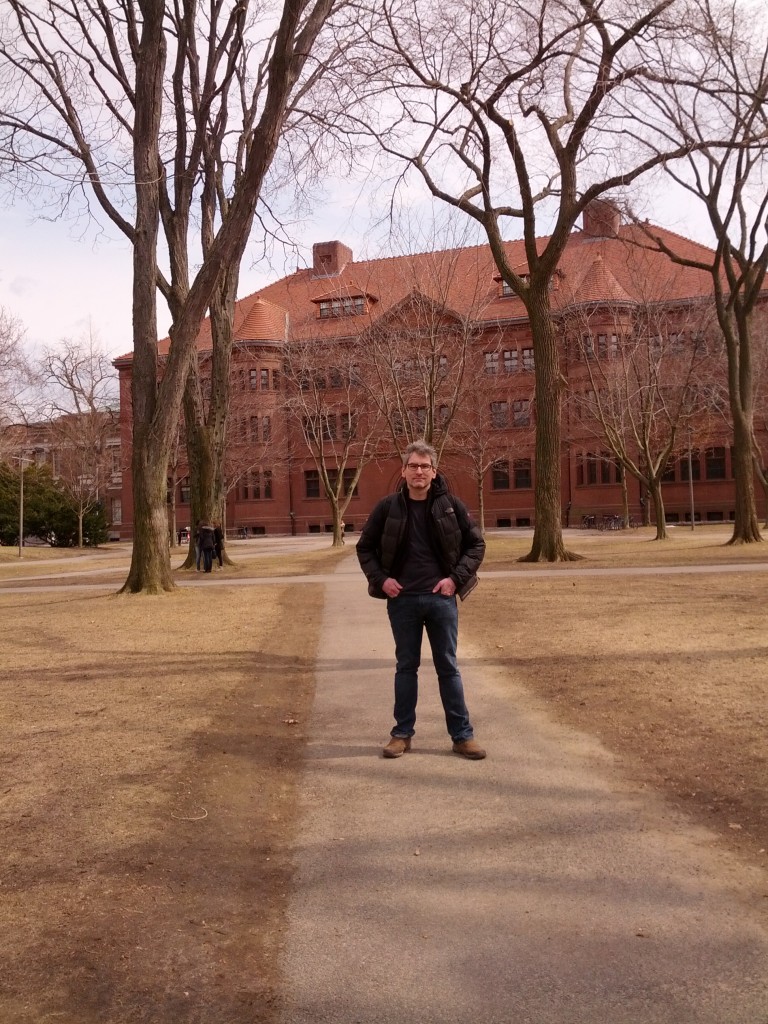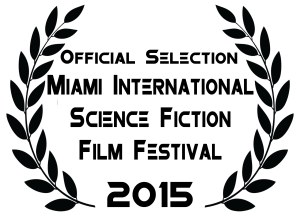
Found In Time goes to Harvard’s VeriCon
#6: Don’t Bother With The Top-Tier Festivals.
I wasted a lot of time – nearly six months – sending the film out to “A-List” festivals. These are the ones that everyone wants to get in – Sundance, Berlin, Toronto, Berlin, Cannes, and Tribeca. I applied to three of them (Sundance, Toronto and Berlin), but really I should have started with the sci-fi/fantasy/horror festivals and targeted them instead.
While it’s always a “nice idea” to premiere at Sundance, the time you spend waiting to hear from them – during which you can’t really apply to any other festivals that may screen beforehand – is time you could be spending on other things. Unless you know for a fact that you can really get into Sundance or one of the other fests, don’t wait for them to pass on you – go find another festival premiere that may better suit your material anyway.
In my case, Shriekfest was happy to premiere my film, and I screened in front of a great, appreciative audience. I also got a lot of press coverage from the screening, was treated really well by the staff and fans, and my LA-based cast were able to see the film as well. I even won an award! If I’d premiered at Sundance earlier that year, I would have been competing with much bigger fish with budgets for publicists and wine-and-dine parties.
#5: Figure Out Your Genre.
I initially thought my film would appeal to indie-types because it’s a little on the experimental side, and fantasy fans, because it’s not really “hard” sci-fi. I called it a “fantasy” film. I consciously avoided the terms “sci-fi” or “science fiction” whenever possible because I didn’t want my film to be compared to other higher-budgeted, effects-driven films.
I was wrong on both counts. The people who liked my film were sci-fi folks. The crew, cast, and early viewers all called it a “sci-fi” film. The festivals that accepted it first: sci-fi/horror fests. The people who seemed to hate it the most (judging by distributor and festival rejections) – the “indie crowd.” I think “Found In Time” hit the market at the same time as a crap-ton of weepy 20-something-let’s-figure-out-our-relationship-bastard-son-of-mumblecore movies hit the market, and those are what played at SXSW, Tribeca, and Rooftop the past couple of years. Some of these films are great, by the way, but they’re not what I made.
If you’ve made a movie, try and figure out where it “belongs” in the genre universe as soon as possible, so you’re not wasting money and time sending it out to festivals, sales agents, and distributors who really don’t know what to do with it. And yes, drama and comedy are genres.
#4: Don’t Make Your Artwork Too Specific:
I printed up my first batch of postcards to indicate the Shriekfest screening time and location. This was dumb. It made it almost impossible to re-use those cards. I had to cut out custom-sized labels with the Eerie Horrorfest times on them, then carefully stick them over the Shriekfest screening times.
#3: Sometimes The Screening Isn’t Going to Be Great.
The projector’s too dark, the sound system is a rusty tin can with string, the attendance is down, there’s a blizzard outside, your screening time is at 9am, there’s a huge racket outside… you can only control so much about your screening, and then you have to let it go. DON’T let your anger show, or take it out on the staff or the audience. Treat the staff and audience with the same respect regardless of their size or the conditions. Some of the best screening experiences I had were when five people showed up. Those five people held a Q&A with me for an HOUR after the film. Those are the fans you should kill to have.
#2: Try to Avoid Online Screeners.
I still firmly believe that DVD and BluRay offer a superior viewing experience, if for no other reason than they require the sales agent/festival programmer/distributor to actually sit down, put the disc in, and watch something. Especially now that net neutrality in this country is about to be toast, I don’t want my film being choked to the point of unplayability, or competing directly with the viewer’s other twenty browser tabs.
#2: Transparency Works Better Than Opacity
The prevailing wisdom back when I got out of school was that you kept your cards close to your chest – your budget, your plans for the film, your premiere status, etc. You didn’t want your film getting stale, so you listed it on IMDB much later in the process. You didn’t want your ideas stolen by competing filmmakers, so you didn’t reach out to them. You didn’t tell your fans what you were up to, as a means of building suspense.
The truth is that telling people what’s going on with the film – especially the cast and crew – at each step of the way has been a great help. It’s kept us all together like the happy family we were when we were shooting. Putting up set photos, listing the film on IMDB, setting up the Facebook page, reaching out to other filmmakers at festivals, comparing notes – it’s all been a great experience and I think has only helped us find a bigger audience. I’ve also had a much better time. I still think that you don’t want to tell people your budget unless it was so low that that’s actually part of your marketing. However, explaining your process, how you shot it, what your successes and failure during the production and post were, can only help you stay connected to your audience, your cast, your crew, and the larger filmmaking community.
#1: Make the Film With The Assumption That You’re Going to Self Distribute.
When I started making Found In Time, finding a distributor still seemed like a good idea, so I budgeted so as to pour as much money into the making of the film as possible. I’m happy with my distribution deal, and I still think that finding a “traditional” solution makes sense if you’ve crossed a certain budget threshold.
However, for super-low-budget films, direct or hybrid distribution models make more sense and will net the filmmaker more money and exposure than waiting forever to get a deal with no advance. You just have to adjust your budget accordingly, and spend more of it on the end of the process rather than on the beginning. But this also frees you to work on your own timetable. Get some buzz from festivals, sell DVDs directly, then find a streaming solution that works. You have to spend more time on distribution, but you’ll learn a lot along the way.
I’m learning more every day! The beauty and difficulty of this strange art/business form we’ve chosen is that there’s always more to figure out. Got a different opinion? Let me know!


